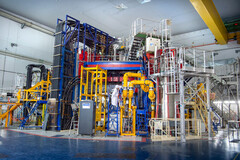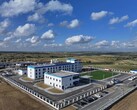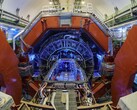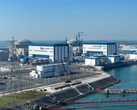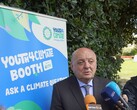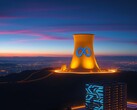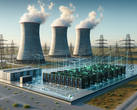The French Alternative Energies and Atomic Energy Commission (CEA) announced a major milestone in the advancements in plasma duration inside a nuclear reactor, by maintaining plasma for 1,337 seconds. This new record represents a 25% improvement over the previous record set by East in China just weeks earlier.
This equals 22 minutes of plasma maintained inside the fusion reactor before it dissipated or became unstable. This technology would use less fuel than a fission nuclear reactor, and produce less radioactive waste, making it key to future energy generation.
According to CEA, the plasma reached a temperature of 50 million degrees, demonstrating significant progress in pursuing controlled nuclear fusion. The result was obtained in a tokamak device – used in magnetic fusion reactors – and could be a crucial step forward for machines like the International Thermonuclear Experimental Reactor (Iter), under construction in France.
The Commission is working towards achieving longer plasma duration – up to hours – and higher temperatures, to approach conditions necessary in fusion plasmas.
“West has achieved a new key technological milestone by maintaining hydrogen plasma for more than twenty minutes through the injection of 2 megawatts (MW) of heating power. Experiments will continue with increased power,” said Anne-Isabelle Etienvre, Director of Fundamental Research at the CEA.
One of the main challenges in fusion research is controlling the inherently unstable plasma while ensuring the longevity of plasma-facing components, which must withstand extreme temperatures and radiation. Researchers at West use superconducting coils and actively cooled components to create a stable environment for these long-duration experiments, which will eventually need to extend to several hours.
Source(s)
CEA (In English)
On 12 February, the CEA’s West machine was able to maintain a plasma for more than 22 minutes. In doing so, it smashed the previous record for plasma duration achieved with a tokamak. This leap forward demonstrates how our knowledge of plasmas and technological control of them over longer periods is becoming more mature, and offers hope that fusion plasmas can be stabilised for greater amounts of time in machines such as Iter.
1,337 seconds: that was how long West, a tokamak run from the CEA Cadarache site in southern France and one of the EUROfusion consortium medium size Tokamak facilities, was able to maintain a plasma for on 12 February. This was a 25% improvement on the previous record time achieved with East, in China, a few weeks previously.
Reaching durations such as these is a crucial milestone for machines like Iter, which will need to maintain fusion plasmas for several minutes. The end goal is to control the plasma, which is naturally unstable, while ensuring that all plasma-facing components are able to withstand its radiation without malfunctioning or polluting it.
This is what CEA researchers intend to achieve and what explains the current record. Over the coming months, the West team will double down on its efforts to achieve very long plasma durations – up to several hours combined – but also to heat the plasma to even higher temperatures with a view to approaching the conditions expected in fusion plasmas.
West is a CEA facility that benefits from the commission’s decades of experience in the use of tokamaks to study plasmas. It welcomes researchers from around the world, who make use of its key characteristics that allow long-duration plasmas, particularly its superconducting coils and actively cooled components. West is one facet of an international movement comprising other major experiments in which CEA researchers are heavily involved, such as JET, the Joint European Torus tokamak in the United Kingdom (closed in late 2023), which holds the record for fusion energy, JT-60SA in Japan, EAST in China, and KSTAR in South Korea, not to mention the flagship machine that is Iter.
“West has achieved a new key technological milestone by maintaining hydrogen plasma for more than twenty minutes through the injection of 2 MW of heating power. Experiments will continue with increased power. This excellent result allows both West and the French community to lead the way for the future use of Iter.”, comment Anne-Isabelle Etienvre, Director of Fundamental Research at the CEA.




